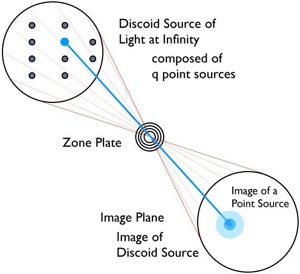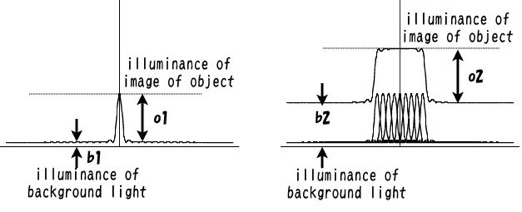Atelier Bonryu(E)
zone plate photography


Atelier Bonryu(E)
zone plate photography


Laboratory: Zone Plate Photography
Taking Zone Plate Photographs
- Remark -
Remark#5: Background Light





































This equation means that the contrast reaches the lower limit of about 1.4, when the size of image increases and becomes as large as the radius of the outermost zone. Contrarily if the size of the image is as small as the resolution of the zone plate extremely high contrast is attained in proportion to the square of the number of zones. However, it should be said over that the above evaluation is for the case of a perfectly coherent light and for an incoherent light the ratio of the light converging at the main focus decreases and the contrast becomes weak.
In this way the reason why a soft photograph with a high resolution can be taken by a zone plate is clarified. The reason is because a high resolution photograph with a weak contrast due to the background light is taken by a zone plate. It is especially important that the contrast of an image of a large photogenic object becomes lower, which is clearly seen in photographs in Gallery of a zone plate of this web site.
A schematic diagram explaining why a contrast of a large image is weak: The left figure shows illuminances of an image of a point source (o1) and associated background light (b1). The right figure shows illuminances of an image of a point source (o2) and associated background light (b2) when the size of the image of the object is 9 times as large as that of the point source. b2=9 x b1 but o2=o1. Therefore, the Weber contrast C=o/b for the case of the right figure is smaller than that of the left figure by 1/9.





